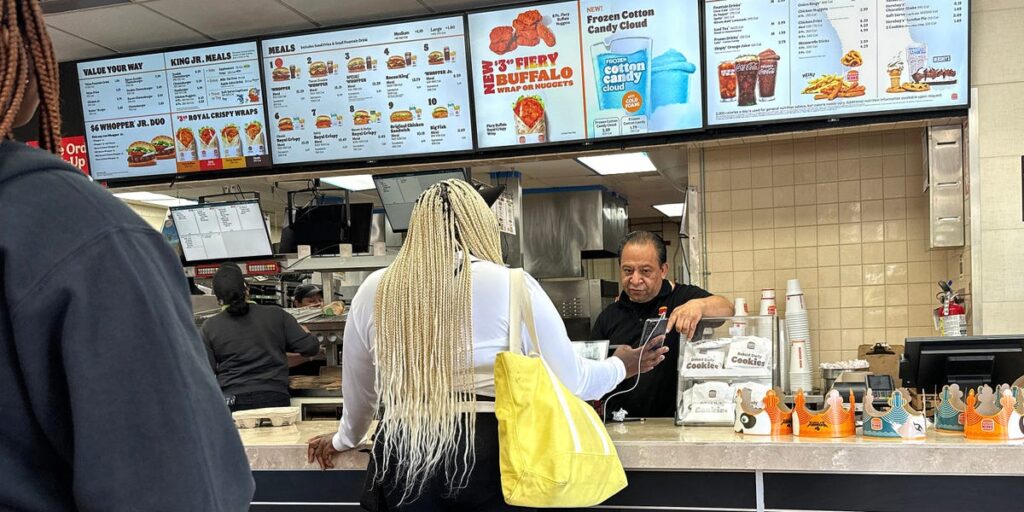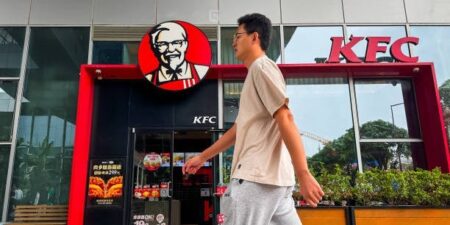Foot traffic to McDonald’s, Burger King, and In-N-Out Burger restaurants in California appeared to fall in the weeks after they raised prices to offset the state’s new $20 minimum wage for workers at limited-service restaurants, new data shows.
Since April, year-over-year visit trends to fast-food chains in the Golden State have lagged behind national trends, suggesting that diners could be put off by the higher menu prices, per data from Placer.ai, which tracks foot traffic analytics.
“It’s clear that the menu price increase is having an impact,” R.J. Hottovy, Placer.ai’s head of analytical research, wrote in a report.
According to the data, the year-over-year change in the number of visits to fast-food chains in California across February and March was slightly higher than the national average.
“However, this abruptly shifted when the minimum wage increase went into effect,” Hottovy wrote in the report, noting that traffic to fast-food chains in California had been weaker than the national average in seven of the eight weeks in April and May.
Restaurants raised prices to offset the new wage
California raised its minimum wage for workers at limited-service restaurants to $20 an hour on April 1.
The legislation applies to chains with at least 60 locations nationwide and has faced fierce opposition from the fast-food industry.
To offset their higher labor costs, restaurants have raised prices, turned to technology and automation like order kiosks, and considered reducing their opening hours. Some pizza restaurants have even laid off delivery workers.
Year-over-year visits to McDonald’s, Burger King, and Wendy’s restaurants in California trended well behind the chains’ national averages in April and May, according to Placer.ai’s data. Jack in the Box and In-N-Out also underperformed on foot traffic in California compared to their national averages, per the data.
A Jack in the Box spokesperson previously told Business Insider that at its company-owned locations in California, it had raised menu prices by between 6% and 8% in response to the minimum wage change. In-N-Out told KTVU that it had raised prices “incrementally” on April 1.
The data has to be taken with a pinch of salt, however.
After all, it only measures footfall, not delivery orders or the size of in-person orders. And there could be other factors, other than menu price increases, deterring diners.
But Placer.ai’s research indicates that the legislation does appear to be having at least some impact on the number of customers visiting fast-food spots in the state, especially when restaurant chains are cagey about sharing their own data showing the effects of their price hikes.
The legislation was introduced to help workers cope with the state’s rising living costs, though many fast-food franchisees have questioned why the wage only applies to their industry. Some fast-food executives, however, say it could make jobs in the industry more desirable and mean they have better-quality candidates.
Californian residents are divided: Some acknowledge that fast food is a tough gig and support the new minimum wage, while others say it will push prices up too much.
Are you a fast-food worker, franchisee, or restaurant manager in California? Email this reporter at gdean@insider.com.
Read the full article here















